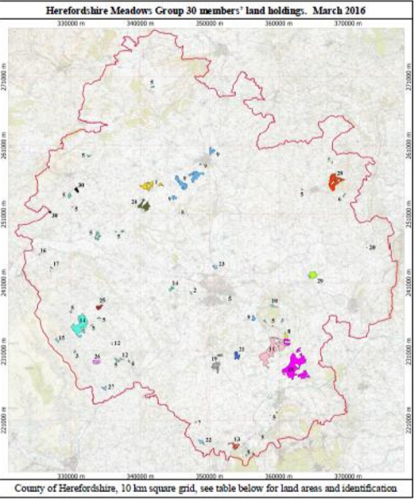Ref: CSFF070012
Lead: Caroline Hanks, caroline.hanks@farming4wildlife.co.uk
Group members: 30
Length of agreement: 5
Area of group (Hectares): 3069
- Improving biodiversity: Enhanced management of existing lowland meadows, lowland acid grassland, pastures and commons to benefit wildlife; To enlarge site and join up habitat networks to enhance diversity and abundance of native wildflower species; Priority habitat creation by creating flower rich meadow on improved grassland or arable land; Improve connectivity and reduce fragmentation between meadows, woodland, hedges, vet trees, ponds, wetlands; Improve habitat for wild pollinators, farmland wildlife and birds by increasing flowers in grassland, hedges, ponds.
- Improving water quality: Encouraging recreation of meadows on land vulnerable to run off or soil erosion; Managing very low input grassland in areas where nutrient run off is affecting water quality (P and sediment); Managing stock access to watercourses to minimise bankside erosion and poaching – alternative water sources; Improving soil structure, soil organic matter levels and enhancing soil health.
- Historic environment: Look for opportunities to encourage reversion of archaeological sites under cultivation to permanent grassland.
- Woodland: Look for opportunities to include open grassland habitat within priority woodland habitat networks e.g. species rich glades; Encourage owners to manage woodland canopy thinning, coppicing, ride management to increase butterflies and moths; Include woodland planting where appropriate linked with arable reversion to grassland to DWP / flood mitigation.
- Landscape: Seek opportunities to restore grassland where this will enhance the pattern and scale of the landscape.
- Multiple Environmental Benefits: Establish low input herb rich grassland in priority areas such as the Woolhope Dome, the Olchon/Golden Valley and priority river corridors; Increase nectar provision for pollinating insects; Encourage sustainable ecological networks and farming systems that are more resilient to climate change; Encourage sustainable grassland management contracting businesses; Encourage profitable grass based livestock systems.

